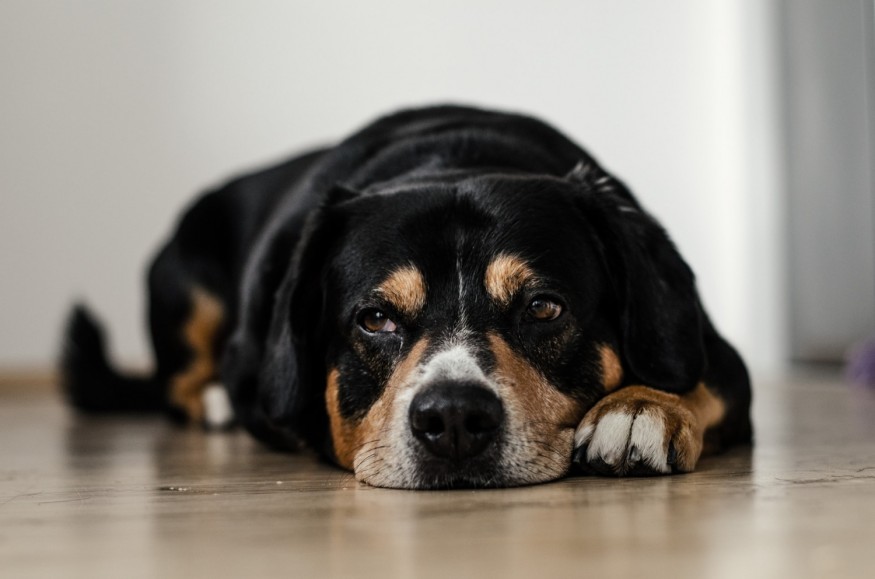The condition of pets should be checked daily since it "may be lethal." Although flystrike can happen at any time of the year, it is more often in the summer when flies are at their busiest.
Although it may be avoided by routinely checking your dogs, this uncomfortable condition can be lethal in as little as 24 hours.

]
Heat Warning
Although heat exhaustion and heat stroke are two problems that the hot weather might provide to family pets, there are other dangers. The RSPCA has advised owners to regularly check their dogs for flystrike as temperatures in certain parts of the UK soar over 40 degrees.
This potentially deadly illness can be extremely unpleasant for your pet in addition to being a life-threatening condition. So, during the heat wave, what exactly should you watch out for in your rabbits, cats, dogs, and guinea pigs? Here is a list of symptoms and treatments for flystrike in animals.
What is Flystrike?
A dangerous ailment known as myiasis or flystrike occurs when flies lay their eggs on an animal's body. These may make animals feel quite ill when they hatch into maggots that feed on the flesh of their "hosts."
Even clean, well-kept dogs can have flystrike, but the RSPCA warns that animals with muddy rear ends or generally unclean fur are particularly susceptible.
When flies increase during the summer, it can be difficult to prevent this unpleasant ailment from harming your dogs, but if you know what to watch out for, it can be treated swiftly.
What signs or symptoms indicate flystrike?
You should keep an eye on all your animals in the heat, not just cats and dogs. In fact, during the summer, rabbits are significantly more likely to become overheated or have flystrike.
According to Dr. Samantha Butler-Davies, manager of veterinary clinical services at Vets4Pets, the hot weather puts rabbits in danger of dying.
"The temperature of their dwellings may rise quickly in warm weather, and if your rabbits don't have access to cool places, a hot garden without shelter can quickly become a death trap.
Symptoms of Flystrike
The greatest technique to keep your rabbits from getting flystrike is to keep their home dry and clean.
To prevent flystrike from inflicting irreversible harm to your pet's skin, it's also important to look for the physical symptoms. But what should you watch out for?
Live Maggots
There's a strong likelihood of flystrike if you spot a clump of live maggots in your pet's fur.
The RSPCA advised daily health inspections to look for disease, harm, and unusual behavior symptoms.
This is also a fantastic tool for spotting maggots as soon as they emerge.
"Check your pet all over their body, especially around their rear end and tail area, at least twice a day," the charity said in warm weather.
Sores on the Skin
Larvae and maggots are typically difficult to see, particularly in bigger animals like cats and dogs.
According to FirstVet, red, raised lesions on the skin that are frequently filled with pus-like discharge are more likely to be the first clinical indications of myiasis in dogs and cats.
Pets who have been impacted by flystrike may also have open wounds that hurt when handled.
Matted Hair
Additionally, occasionally wet or moist, abnormally matted hair may be seen in infected animals.
General Signs of Illness
The appearance of your pet may not be the only sign of flystrike. Owners should know the telltale signs of this deadly disease, including how their pets to act.
Lethargy, a loss of appetite, and resistance to movement are common symptoms of the disease. Particularly noticeable in cats and dogs are these.
When afflicted with flystrike, rabbits, guinea pigs, and other small animals may become withdrawn or exhausted.
Unusual Behavior
According to FirstVet, animals with myiasis may also exhibit excessive skin biting and head shaking because of the severe discomfort the skin ailment causes.
"Excessive vocalization" in cats may also be a sign of trouble.
A "Foul Odor"
It's vital to be aware of any peculiar scents remaining around your dogs since raw skin can leave a bad stench.
According to FirstVet, this "foul stench" is caused by purulent, bloated sores frequently found on cats, dogs, and rabbits, where maggots are eating their skin.
Dirt Around the Back
Clean your pet's back end immediately with warm water, and ensure the area is completely dry.
For more news about the latest animal trends, don't forget to follow Nature World News
© 2026 NatureWorldNews.com All rights reserved. Do not reproduce without permission.





